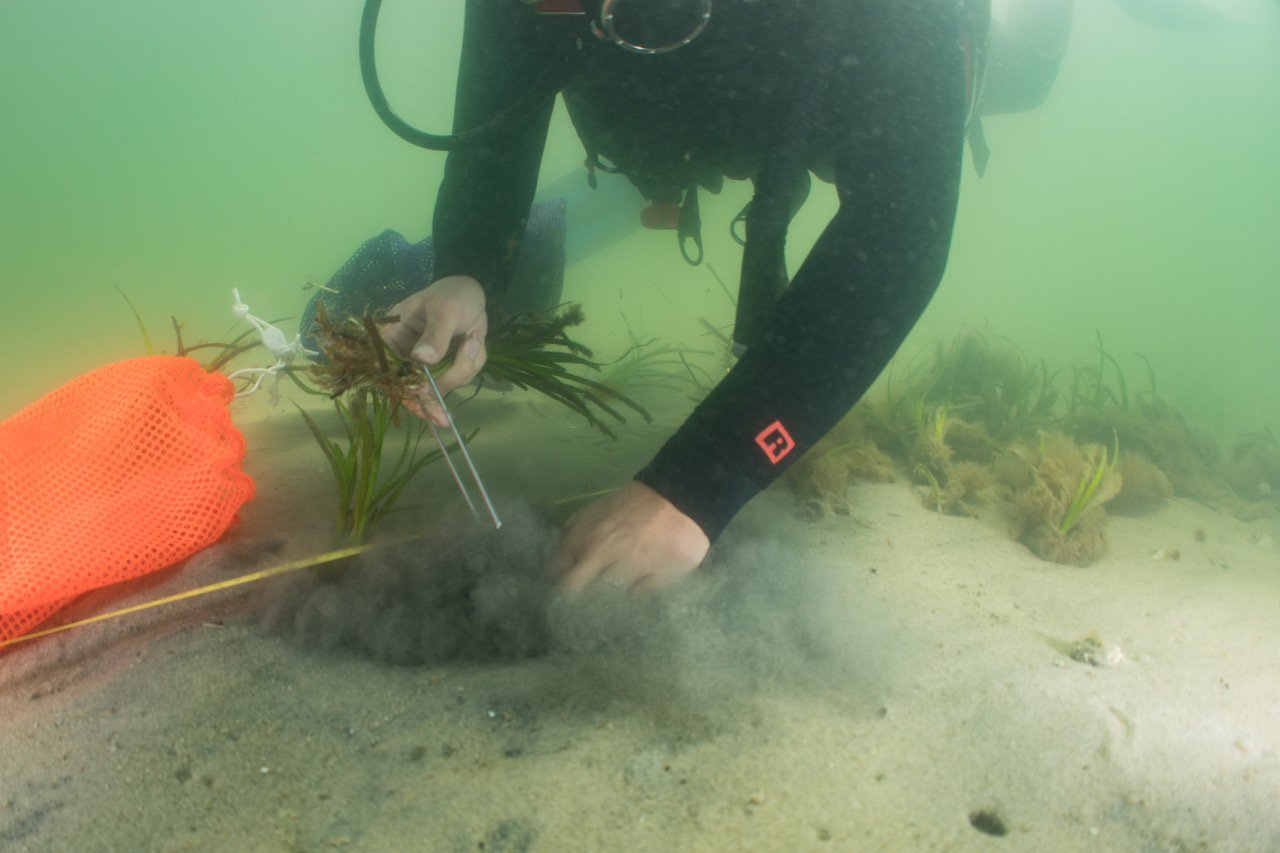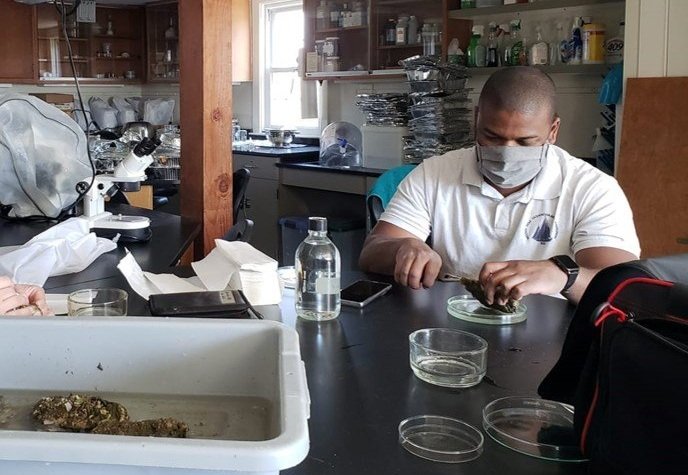
NLC Green Crab Population Study
Co-funded with the Nantucket Land Council
By Emily Molden and Emily Goldstein-Murphy PhD
Green crabs (Carcinus maenas) are a mid-sized crab native to Europe. The species easily adapts to thrive in a wide range of water temperatures, salinities, and habitats. Through international trade and subsequent larval transport, the green crab has invaded every continent except Antarctica and will likely continue to expand its invaded range through larval transport. The green crab causes ecological harm as a predator of small-size-class mollusks and as an ecosystem engineer triggering damage to eelgrass beds in introduced habitats. Detrimental effects from the green crab invasion can be found at multiple trophic levels, from animals that use eelgrass as a nursery habitat to those that use it as a primary food source, or through indirect competition for mollusk prey. Invasive green crabs cause economic harm to shellfishing industries on the east and west coasts of North America and elsewhere by attacking commercial shellfish species before they reach marketable size.
Many individuals and organizations are working to develop a profitable marketplace for the green crab in North America to encourage commercial trapping to control numbers of the species. Even if successful markets are created, it is likely non-commercial conservation trapping will be necessary if intense control is needed to protect vulnerable shellfish or eelgrass resources. To this end, both green crab fishers and conservation managers need to understand how to efficiently capture green crab to realize the greatest benefit, whether that be economic or ecological.
This project, a collaboration between the Nantucket Shellfish Association and the Nantucket Land Council, seeks to collate relevant knowledge of the green crab species and invasion so that managers will gain the benefit of previous research. The project also systematically and statistically investigates the habitat and geographic location associations of the green crab in Nantucket Harbor over the course of the 2021 summer season. This information will allow for research-based design of conservation projects or business plans focused on the management of the green crab in Nantucket Harbor.
NCF Oyster Reef and Salt Marsh Restoration
Co-funded with the Nantucket Conservation Foundation
By Jennifer Karberg PhD, NCF
As part of the Nantucket Conservation Foundation’s research into improving coastal resilience at impacted salt marshes, they set out to research the feasibility of an oyster reef installation at the intertidal shore of Medouie Creek.
Through collaborations with the Town of Nantucket’s Natural Resources Department and their Shellfish Hatchery, they built interlocking concrete blocks that provide a surface for oysters to attach too. A third of the reef’s castle blocks were taken to the Shellfish Hatchery to grow baby oyster spat on, prior to building the reef.
In the fall of 2021, NCF staff along with a group of volunteers from many island conservation groups came together over three days to build the linear oyster reefs to protect Medouie Creek. This project is the first of its kind in Massachusetts and will provide examples of another way to increase shoreline resilience.
NLC Eelgrass Health Assessment
Co-funded with the Nantucket Land Council and the Great Harbor Yacht Club Foundation
By Alyssa Novak PhD, Boston University
NBI Bay Scallop Invasive Species Study
Co-funded with the Nantucket Biodiversity Initiative
By Andrew David PhD, Clarkson University
Climate change and diseases are the two biggest threats to the global shellfish industry. The study sought to investigate one of these threats – disease – within the Nantucket Bay Scallop population.
In particular, the David Lab was interested in investigating the identity and parasite load of shell-boring polychaetes infecting these scallops. While we have a fair amount of knowledge on polychaete worm infestation on farmed oysters on the New England coast, nothing was unknown about Nantucket’s Bay Scallops. This is important because proper identification of any pathogen infecting the animals is the first step towards management and or eradication should an outbreak occur. Further, the baseline would provide valuable data on the level of infestation present on the farm which in turn can inform farming practices.









